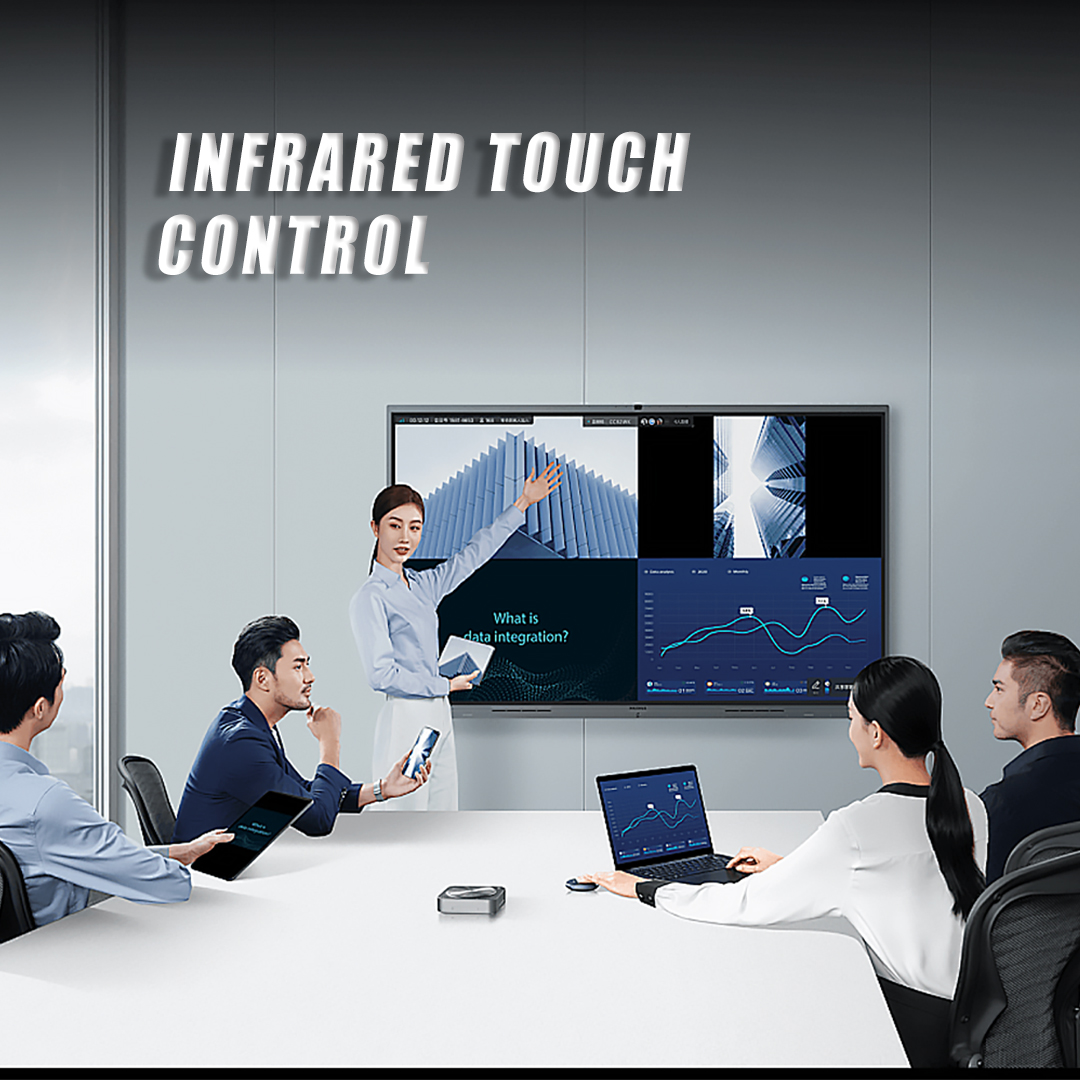Here are the reasons why teachers use digital whiteboards.
Enhance teaching interactivity.
- The interactive whiteboard for classroom allows teachers and students to touch directly on the surface of the whiteboard. For example, when teaching mathematical geometry, teachers can invite students to the stage and touch the whiteboard to drag the shape, change the shape and position of the shape, so that students can participate more actively in the class rather than passively listen to the lecture. This interactivity helps to improve students' attention and interest in learning, allowing them to better understand and grasp knowledge in the process of participation.
Rich display of teaching resources.
- Teachers can use digital board for teachings to present multiple forms of teaching resources. It can be connected to computers, projectors and other devices to conveniently display PPT, video, audio, animation, etc. For example, in Chinese teaching, teachers can play a video related to the content of the text, such as an animated video made according to the artistic conception of the poem when explaining ancient poems, so that students can feel the scene depicted in the poem more intuitively. You can also display a variety of high-definition pictures, such as showing natural scenery, topography and landforms around the world in geography class, to help students better understand abstract concepts.
It is convenient for annotating and explaining teaching content.
- When using the interactive whiteboard, teachers can annotate directly on the teaching content presented. For example, when teaching English reading passages, teachers can use an electronic pen to circle key words and sentences on the whiteboard and write notes on the side, which is as convenient as writing on a traditional blackboard, but combines the advantages of multimedia resources. Moreover, the content of these annotations can be saved for students to review after class, which helps students better understand the teacher's teaching ideas and key contents.
Increase teaching flexibility.
- Interactive whiteboards make the teaching process more flexible. Teachers can adjust the teaching content and teaching methods at any time according to the feedback of students in the classroom and the actual learning situation. For example, if a student is found to have difficulty understanding a certain knowledge point, the teacher can immediately search the whiteboard for relevant cases, exercises, or mini-games to help students consolidate and understand. In the teaching of science experiment class, if the experimental steps are more complicated, the teacher can use the split-screen function of the whiteboard to show the text description of the experimental steps while playing the video of the experimental operation, and pause, play back or switch the content at any time according to the students' questions.
Promote collaborative learning in the classroom.
- Students can work in groups to work collaboratively on a whiteboard. For example, in a group project-based activity, students in each group can take turns presenting their discussions, mind maps, or creative solutions on the board. In the history lesson's group activities, students in small groups can work together on the whiteboard to comb through the timeline of historical events and add relevant characters and event details, which can develop students' teamwork and communication skills, while also allowing students to learn different ways of thinking and perspectives from their peers.

 Mr. zptouch01
Mr. zptouch01





